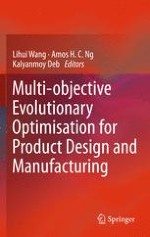2011 | OriginalPaper | Chapter
9. Preference Vector Ant Colony System for Minimising Make-span and Energy Consumption in a Hybrid Flow Shop
Authors : Bing Du, Huaping Chen, George Q. Huang, H. D. Yang
Published in: Multi-objective Evolutionary Optimisation for Product Design and Manufacturing
Publisher: Springer London
Activate our intelligent search to find suitable subject content or patents.
Select sections of text to find matching patents with Artificial Intelligence. powered by
Select sections of text to find additional relevant content using AI-assisted search. powered by
